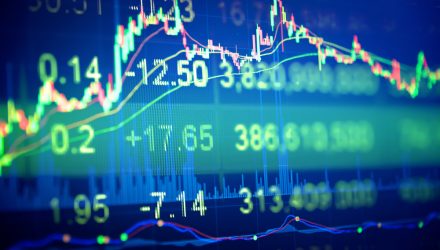There are various ways to play the current market—as volatile as it has been given the effects of the coronavirus pandemic. While it’s possible to stay in cash or go with quality or value, another tactic is to consider expected price momentum.
“Investors should select companies based on long-term sales growth, expected price momentum, cash position growth, and free cash flow/enterprise value, wrote Brian Sanborn and Dung Nguyen,” per a MarketWatch report. “They explain: expected price momentum compares the loftiest analyst price target for the coming year to the most recent stock price.”
“It reflects the most optimistic expectation for a stock price’s growth over the next year,” the analysts noted.
The report stated that investors will typically skew towards companies with the highest upside potential when markets hit a bottom. With regard to cash position growth, it refers to the “12-month point change in cash plus short-term investments divided by total assets,” the analysts write.
“A large amount of liquid assets relative to total assets indicates greater financial strength,” they added. “However, too large of a ratio can indicate management’s failure to invest in the company’s future growth.”
“Those trading inexpensively relative to their free cash flow provide a higher margin of safety,” Sanborn and Nguyen write. “Free cash flow/enterprise value has been the best-performing strategy over time.”
One fund investors can use to take advantage of momentum is the QRAFT AI-Enhanced U.S. Large Cap Momentum ETF (AMOM). The fund itself seeks capital appreciation via active management with the goal of achieving its investment objective by investing at least 80% of its net assets, plus the amounts of any borrowings for investment purposes, in securities of U.S.-listed large-capitalization companies.
The Adviser consults a database generated by Qraft’s AI Quantitative Investment System, which automatically selects and weights portfolios of U.S. large cap companies to provide exposure to a portfolio of 50 companies that have had higher residual returns relative to their similar-sized peers over a rolling 3 to 36-month period.
Another ETF is the iShares Edge MSCI USA Momentum Factor ETF (BATS: MTUM), which has been yielding gains of over 23% YTD according to Morningstar performance numbers. The fund seeks to track the investment results of the MSCI USA Momentum Index.
The fund generally will invest at least 90% of its assets in the component securities of the underlying index and may invest up to 10% of its assets in certain futures, options and swap contracts, cash and cash equivalents. As far as the index goes, it consists of stocks exhibiting relatively higher momentum characteristics than the traditional market capitalization-weighted parent index, the MSCI USA Index, which includes U.S. large- and mid-capitalization stocks.
For more market trends, visit ETF Trends.

